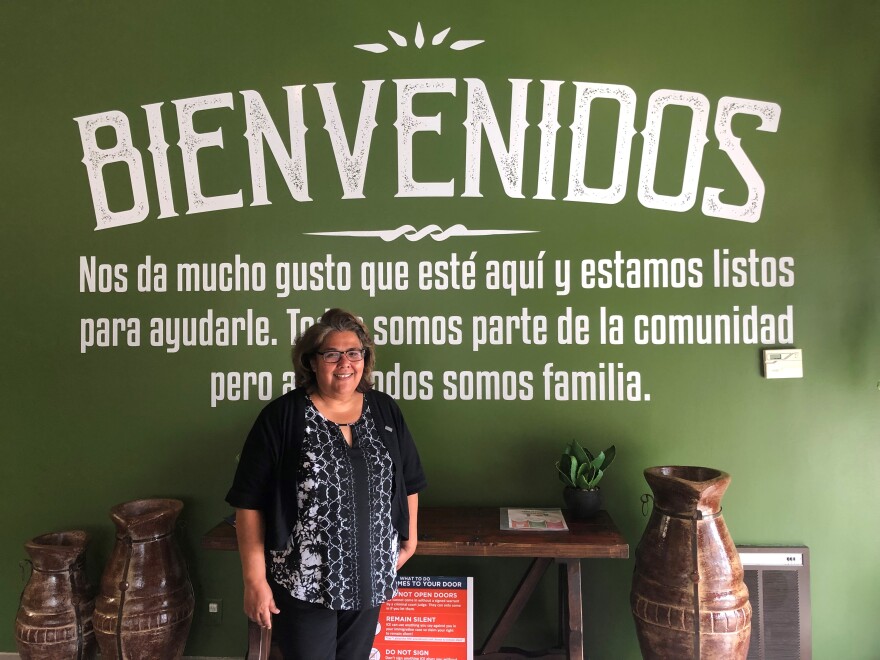Kansas City area schools are making a final push to get families to fill out the 2020 census.
The census is critically important to schools, but a third of Kansans and Missourians haven’t been counted yet. The U.S. Census Bureau has said it will stop counting a month early, on Sept. 30.
“When we don’t have an accurate census count, we have a harder time meeting the needs of all the children and families in the community,” said J.C. Cowden, a pediatrician at Children’s Mercy Hospital involved in census outreach.
“There are many community organizations concerned that we won’t get the funding that we need to help kids and families get education, health, nutrition and many other social supports.”
But the pandemic has stymied efforts to get the most vulnerable families – those most likely to use Medicaid, CHIP and SNAP – to participate in the census.
Child nutrition
Pre-pandemic, the National School Lunch Program was perhaps the most visible use of federal education dollars. Kansas considers about three-quarters of students in the Kansas City, Kansas, Public Schools to be economically disadvantaged, and many of them eat for free at school.

When the coronavirus closed schools in mid-March, the immediate effort to continue feeding kids underscored the importance of federal spending in schools.
“Students who experience poverty, they're often also likely to experience what I call opportunity gaps,” said Lisa Walker, executive director of federal programs for the Kansas City, Kansas Public Schools.
“Those educational funds through Title I enable us to push additional teachers into the classroom so that we have smaller class sizes so teachers can provide more individualized instruction.”
The census determines each state’s proportional share of federal dollars for schools. States that do a good job of making sure their residents get counted get more money than states that don’t.
“We’re looking at one data pull that’s going to impact a decade of services,” Walker said.
KCKPS was planning to make a big census push. Then the pandemic happened.
‘Done its damage’
Even before the pandemic, Irene Caudillo was really worried that Latinos wouldn’t fill out the census. The executive director of El Centro, a Kansas City, Kansas-based community service organization, Caudillo knew that many Latinos didn’t trust the Trump administration with their information.
A proposed citizenship question the Supreme Court rejected “has already done its damage,” Caudillo told KCUR. “With the rhetoric, that there are many Latinos that very much are going to decide not to move forward with any more information to a mistrusted government.”

Information provided to the Census Bureau is confidential: it isn’t supposed to be shared with other parts of the federal government. But Caudillo’s prediction has come true. As of Tuesday, Missouri’s census response rate was 64.3%, just below the national average, and Kansas’ was just above, 68.4%. In predominantly Latino neighborhoods, response rates were as low as 36.5%.
The Pew Research Center estimates that the number of Latinos in the U.S. has increased from 50 million to 60 million since the last census. In the Kansas City area, Latinos are the fastest growing demographic group, and many suburban districts now educate more Latino students than Black students.
“If undercounted, communities lose out on the opportunity to better serve everyone,” Caudillo said. “For the Latino community, it's really important for them to see themselves as … a part of the community.”
The next decade
The pandemic has also hit the families least likely to be counted the hardest. They’re getting sicker from the coronavirus and experiencing more job loss.

Last weekend, the Kansas City, Missouri, Public Schools made a final census push at Summerfest, the district’s back-to-school supply drive and immunization clinic. As families drove through this year’s event, KCPS employees asked if they’d been counted yet.
The Kansas City, Kansas, Public Schools has been doing the same thing with distributing food with Harvesters. The district has been running a call bank to reach out to parents, as well as purchasing devices for families to use to complete the census online.
It’s worth noting that federal coronavirus relief dollars flowed into communities based on population. Eventually, decisions about where to send help could be made using 2020 data.
“Once the pandemic is over,and kids are going back into schools, many of the programs that help to support families are programs that use census data to determine funding levels,” said Margo Quiriconi, the director of community health initiatives for Children’s Mercy.
Families that don’t respond to the census by the end of September won’t be counted – and schools will miss out on a decade of critical support. That’s almost a child’s entire school career.




